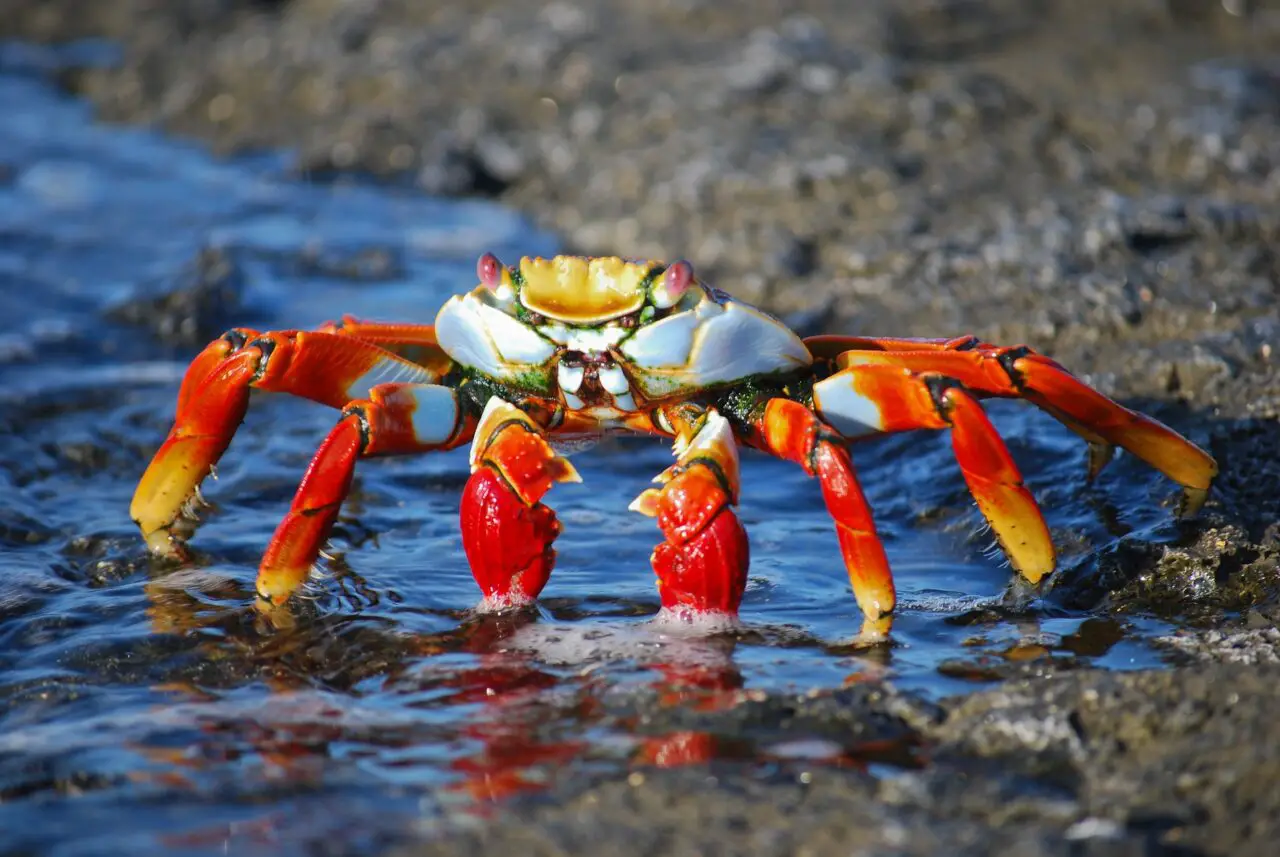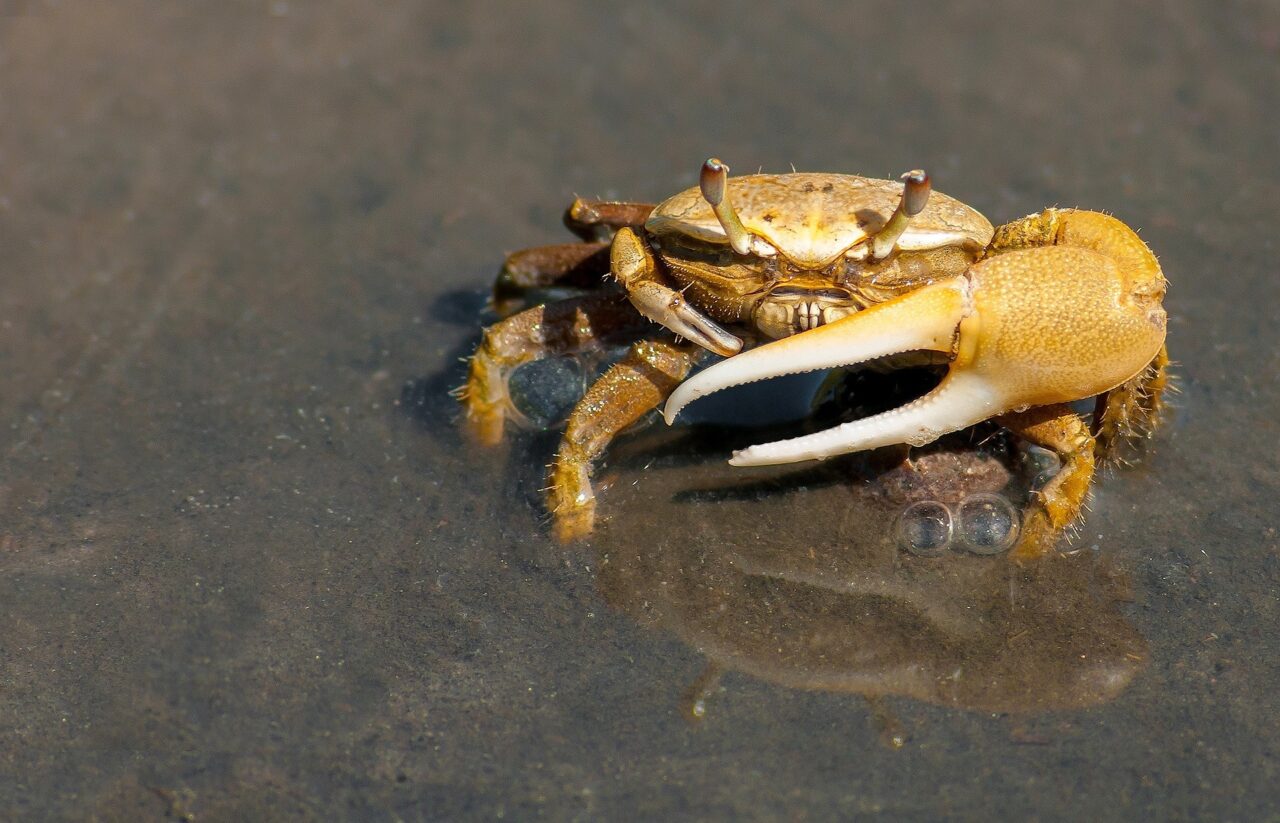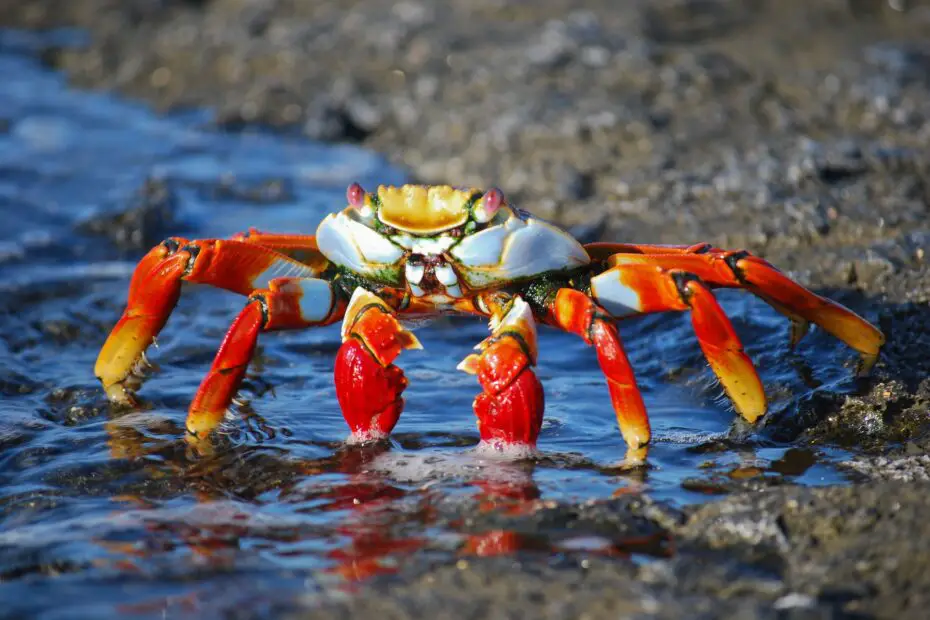What Does A Crab Eat? Crabs, with their distinctive claws and scuttling movements, are intriguing creatures that thrive in various marine and freshwater environments. Have you ever wondered what fuels these clawed creatures and sustains their active lifestyles?
In this article, we will explore the diverse culinary preferences of crabs, ranging from herbivorous delights to carnivorous pursuits. Join us as we delve into the world of crab diets and uncover the fascinating array of foods that these crustaceans consume. So, What Does A Crab Eat?
You may also want to know what a chipmunk eats.
Introduction to Crab’s Diet
What Does A Crab Eat? Crabs are highly adaptable creatures with diverse dietary preferences. Their feeding habits vary depending on their species, habitat, and availability of food sources. While some crabs are herbivores, relying on plant matter, others are carnivores, preying on smaller animals. Additionally, certain crabs exhibit omnivorous tendencies, enjoying a versatile diet that includes both plant and animal matter.
Herbivorous Crabs: Vegetarian Delights
Some crab species have embraced a herbivorous lifestyle, primarily feeding on plant material. They graze on algae, seagrasses, and decaying plant matter found in their habitats. These herbivorous crabs play an essential role in maintaining the balance of underwater ecosystems by controlling algal growth and contributing to nutrient recycling.
Carnivorous Crabs: Masters of the Hunt
Carnivorous crabs are skilled hunters, preying on a variety of smaller animals. They have adapted to capture and consume prey such as small fish, mollusks, worms, and even other crabs. Their powerful claws and sharp mandibles aid in tearing apart their prey, allowing them to extract the nutrient-rich flesh.

Omnivorous Crabs: The Versatile Eaters
Omnivorous crabs demonstrate a flexible approach to their diet, consuming both plant and animal matter. They scavenge for detritus, small invertebrates, algae, and even carrion. This dietary flexibility enables them to adapt to changing food availability and exploit a wide range of food resources.
Unique Feeding Adaptations
Crabs have evolved various adaptations that aid in their feeding endeavors. Their specialized claws, called chelipeds, serve multiple purposes. They can be used to crush shells, tear apart prey, or manipulate plant matter. Crabs also possess well-developed mouthparts that allow them to scrape algae or capture and shred prey.
Crab Feeding Behaviors
Observing crab feeding behaviors is a fascinating experience. Some species meticulously pick at algae or use their claws to scrape food particles from surfaces. Others employ stealth and ambush tactics to capture unsuspecting prey. These feeding behaviors showcase the diverse strategies that crabs have developed to secure their meals.
Interactions with Other Marine Species
Crabs play a significant role in the intricate web of marine interactions. As herbivores, they can shape the distribution and abundance of plant species in their habitats. Carnivorous crabs help regulate populations of smaller animals, contributing to the overall balance of the ecosystem. Additionally, some crabs engage in symbiotic relationships with other species, such as anemones or sponges, gaining protection and food in return.
Crab Feeding Habits in Different Habitats
Crab feeding habits can vary depending on their habitat. Coastal crabs may feed on detritus washed ashore, while mangrove-dwelling species consume fallen leaves and organic matter. Crabs in coral reef ecosystems may graze on algae or scavenge for prey among the intricate coral structures. The specific food sources available in each habitat shape the dietary preferences and behaviors of different crab species.
Nutritional Requirements for Healthy Crabs
Like any living organism, crabs have specific nutritional requirements to support their growth, reproduction, and overall health. These requirements include essential nutrients such as proteins, carbohydrates, fats, vitamins, and minerals. A balanced diet that meets these nutritional needs is crucial for the well-being and longevity of crabs in their natural habitats or in captivity.
Feeding Crabs in Captivity
For those who keep crabs in captivity, providing a suitable diet is essential for their well-being. Depending on the species, captive crabs may be offered a combination of commercial crab food, fresh or frozen seafood, and plant-based supplements. It is important to research the dietary preferences and specific nutritional needs of the crab species in order to provide a well-rounded and nutritious diet.

Crab Conservation and Sustainable Practices
As with any marine creature, the conservation of crab species and their habitats is crucial. Sustainable fishing practices, responsible seafood consumption, and the preservation of coastal and marine ecosystems are essential for the long-term survival of crabs. Supporting initiatives that promote sustainable fishing and conservation efforts can contribute to the protection of these fascinating creatures.
Exploring Crab Feeding Myths and Misconceptions
Crab feeding habits have occasionally been surrounded by myths and misconceptions. One common misconception is that all crabs are scavengers. While some species do scavenge, many crabs actively hunt or graze on specific food sources. Understanding the diverse dietary preferences and behaviors of different crab species helps dispel these misconceptions and allows for a more accurate appreciation of their feeding habits.
Fascinating Research on Crab Diets
Scientific research continues to shed light on the intricacies of crab diets. Studies have explored the nutritional composition of different food sources, analyzed the feeding behaviors of specific crab species, and investigated the ecological impacts of crab foraging. This ongoing research deepens our understanding of crab feeding ecology and contributes to their conservation and management.
Conclusion
Crabs, with their diverse dietary preferences, play important roles in marine ecosystems. From herbivorous grazers to carnivorous hunters and adaptable omnivores, these clawed creatures demonstrate remarkable feeding adaptations and behaviors. By understanding their dietary needs and the interactions they have with their environment, we can appreciate the vital role they play in maintaining the balance and health of coastal and marine ecosystems.
So, the next time you encounter a crab scuttling along the shoreline or marveling at its intricacies in an aquarium, remember the rich array of foods that these creatures consume. From vegetarian delights to carnivorous pursuits, the culinary preferences of crabs are as diverse as the habitats they inhabit.
